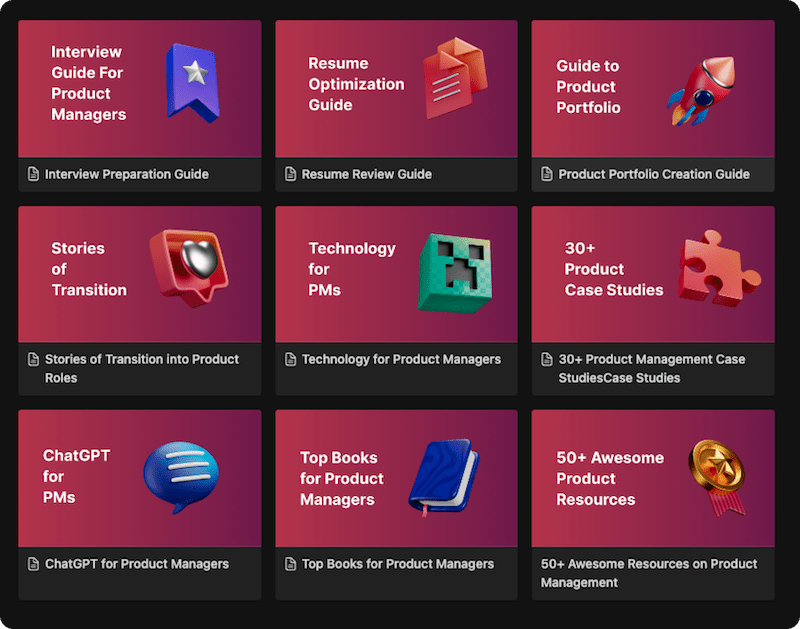As a product manager, do you ever feel like you’re juggling a dozen different requests at once? Between new feature ideas from stakeholders, bug reports from users, and technical debt that needs to be addressed, it’s easy to lose track of what’s most important. This is where a well-managed Product Backlog becomes your most valuable asset.
The Product Backlog is more than just a to-do list; it’s a dynamic, prioritized list of everything that is needed to improve your product. It’s the single source of truth for your development team, providing a clear and transparent view of the work to be done. This guide will take you from a beginner’s understanding of the Product Backlog to a pro-level, empowering you to master this essential Agile tool.
Definition & Origin
The concept of the Product Backlog is a cornerstone of the Scrum framework, an Agile methodology for developing, delivering, and sustaining complex products. While the term “backlog” has been used in various contexts, its specific application in software development gained prominence with the rise of Agile methodologies in the early 2000s. Key figures like Ken Schwaber and Jeff Sutherland, the co-creators of Scrum, formalized the Product Backlog as one of the three essential Scrum artifacts, alongside the Sprint Backlog and the Increment.
According to Scrum.org, a leading authority on Scrum, “There should be only one Product Backlog per product.” This ensures a single, transparent source of work, which is crucial for effective team alignment and focus.
Benefits & Use-Cases
A well-maintained Product Backlog offers numerous benefits:
- Clarity and Focus: It provides a single source of truth for what the team is working on and what’s coming next, ensuring everyone is aligned on the product’s direction.
- Flexibility and Adaptability: The Product Backlog is a living document that can be updated as new information emerges, allowing for continuous adaptation to changing market needs and customer feedback.
- Improved Collaboration: It serves as a central point for discussion and collaboration among the product owner, development team, and stakeholders.
- Enhanced Transparency: The Product Backlog is visible to everyone, fostering transparency and trust within the organization.
- Effective Prioritization: It enables the product owner to prioritize work based on business value, ensuring that the most important items are addressed first.
The Product Backlog is used by a wide range of professionals, including:
- Product Managers/Product Owners: Who are responsible for creating, maintaining, and prioritizing the backlog.
- Development Teams: Who use the backlog to understand what to build next.
- Scrum Masters: Who help the team and the organization understand and use the backlog effectively.
- Stakeholders: Who can view the backlog to understand the product’s direction and progress.
How It Works / Step-by-Step Guide
Creating and managing a Product Backlog is an ongoing process. Here’s a step-by-step guide to get you started:
- Establish a Product Vision and Goal: Before you can create a backlog, you need a clear vision for your product and a specific, measurable product goal. As described by the Scrum Alliance, your product vision is your compass, guiding every decision you make.
- Gather Inputs: Collect ideas, requests, and feedback from various sources, including customers, stakeholders, the development team, and market research.
- Create Product Backlog Items (PBIs): Each item in the backlog should represent a piece of work that delivers value to the customer. Common formats for PBIs include user stories, epics, bug fixes, and technical tasks. According to the Agile Academy, each PBI should have a description, value, estimate, and order.
- Prioritize the Backlog: The product owner is responsible for ordering the items in the backlog based on their priority. This is a continuous process known as backlog grooming or refinement. Factors to consider when prioritizing include business value, customer impact, urgency, and effort.
- Refine the Backlog: Backlog refinement is a regular activity where the product owner and the development team collaborate to add details, estimates, and order to the backlog items. This ensures that the items at the top of the backlog are ready for the team to work on in the next sprint.
- Continuously Update: The Product Backlog is a living document. It should be continuously updated to reflect new information, changing priorities, and feedback from customers and stakeholders.
Mistakes to Avoid
Here are some common pitfalls to avoid when managing a Product Backlog:
- A “Black Hole” Backlog: A backlog that is too long and unmanageable becomes a “black hole” where ideas go to die. Regularly groom and prune your backlog to keep it lean and focused.
- Lack of a Clear Product Goal: Without a clear product goal, your backlog will lack direction and focus.
- Treating the Backlog as a Commitment: The Product Backlog is a list of options, not a commitment to deliver everything on the list.
- Not Involving the Development Team: The development team has valuable insights into the technical feasibility and effort required for each backlog item. Involve them in backlog refinement and prioritization.
- Poorly Written PBIs: Vague or incomplete PBIs can lead to confusion and rework. Ensure that each PBI is clear, concise, and has enough detail for the team to understand what is required.
Examples / Case Studies
Let’s look at a real-world example of a Product Backlog for a new mobile banking app:
| Priority | Product Backlog Item (PBI) | User Story |
| 1 | User login | As a user, I want to be able to log in securely so that I can access my account. |
| 2 | View account balance | As a user, I want to be able to view my account balance so that I can track my finances. |
| 3 | Transfer funds | As a user, I want to be able to transfer funds between my accounts so that I can manage my money. |
| 4 | Pay bills | As a user, I want to be able to pay my bills through the app so that I can save time. |
| 5 | Set up recurring payments | As a user, I want to be able to set up recurring payments so that I don’t miss any due dates. |
This is a simplified example, but it illustrates how a Product Backlog can be used to organize and prioritize work for a new product.
Related Concepts & Comparisons
Product Backlog vs. Sprint Backlog
The Product Backlog and the Sprint Backlog are two distinct artifacts in Scrum. Here’s a breakdown of the key differences:
| Aspects | Product Backlog | Sprint Backlog |
| Owner | Product Owner | Development Team |
| Scope | All work for the product | Work for a single sprint |
| Duration | Ongoing | A single sprint |
Product Backlog vs. Product Roadmap
While the Product Backlog is a detailed list of work items, the product roadmap is a high-level, strategic document that outlines the vision and direction of the product over time. The roadmap provides the “why” behind the product, while the backlog provides the “what” and “how.”
Advanced Product Backlog Management: The DEEP Framework
For a Product Backlog to be truly effective, it must possess certain qualities. Roman Pichler, a renowned product management expert, introduced the DEEP acronym to describe the attributes of a good Product Backlog. Understanding and applying the DEEP framework can elevate your backlog from a simple list to a powerful strategic tool.
A DEEP Product Backlog is:
- Detailed Appropriately: Not all Product Backlog Items (PBIs) need the same level of detail. Items at the top of the backlog, which are slated for upcoming Sprints, should be small, well-defined, and thoroughly detailed so the team can start working on them immediately. Conversely, items further down the backlog can be larger and less detailed. As these items move up in priority, they are progressively refined and broken down into smaller, more granular stories. This approach prevents the team from wasting time over-analyzing features that may change or be de-prioritized later.
- Estimated: Every item in the Product Backlog should have an estimate of the effort required to complete it. These estimates are provided by the Development Team, as they are the ones who will be doing the work. Estimates don’t have to be perfect; they are meant to provide a rough idea of the item’s size, which helps the Product Owner in prioritization and forecasting. Common estimation techniques include Story Points, T-shirt sizes (S, M, L, XL), or ideal days.
- Emergent: A Product Backlog is never static; it is a living artifact that evolves. The backlog is constantly changing as the team learns more about the product, the market, and the users. New items are added, existing items are re-prioritized, and some may be removed altogether. This emergent nature allows the team to adapt to change and respond to new opportunities, ensuring the product remains relevant and valuable.
- Prioritized: All items in the backlog are ranked in order of importance. The most valuable and urgent items are placed at the top, while less critical items are at the bottom. The Product Owner is responsible for this prioritization, which should be based on factors like business value, customer impact, dependencies, and risk. A prioritized backlog ensures that the Development Team is always working on the most impactful tasks, maximizing the value delivered in each Sprint.
Conclusion
Mastering the Product Backlog is not a one-time task but a continuous journey of refinement, collaboration, and strategic thinking. It is the central nervous system of your product development process, transforming a simple product idea into a tangible, value-driven reality. By embracing the principles outlined in this guide—from creating clear Product Backlog Items and engaging in regular refinement to avoiding common pitfalls—you are not just managing a list of tasks. You are actively steering your product toward its goal, ensuring that every sprint and every feature contributes meaningfully to the overall vision.
Ultimately, a well-managed Product Backlog empowers your team with clarity, focus, and the agility to respond to an ever-changing landscape. It fosters transparency with stakeholders and builds a shared understanding of what it takes to build a successful product. As you apply these concepts and techniques, you will find the Product Backlog becomes your most trusted ally in navigating the complexities of product development. Keep it DEEP, keep it dynamic, and use it to build products that your customers will truly love.
FAQ’s
While a Product Backlog can be thought of as a specialized to-do list, it is much more than that. It is a dynamic, prioritized list of work items that is continuously updated and refined. It is also a collaborative tool that is used to align the entire team on the product’s direction.
The product owner is accountable for the Product Backlog, including its content, availability, and ordering. However, the entire Scrum team collaborates on refining and updating the backlog.
The Product Backlog should be updated continuously as new information becomes available. Backlog refinement is an ongoing activity that should be done regularly to ensure the backlog is always up-to-date.
A Product Backlog can include a variety of items, such as new features, enhancements to existing features, bug fixes, technical debt, and research tasks. The key is that each item should deliver value to the customer.
There are many techniques for prioritizing a Product Backlog, such as MoSCoW (Must-have, Should-have, Could-have, Won’t-have), value vs. effort, and the Kano model. The product owner is responsible for choosing the prioritization method that works best for their product and team.
Learn better with active recall quiz
How well do you know What is a Product Backlog? Let’s find out with this quick quiz! (just 10 questions)


